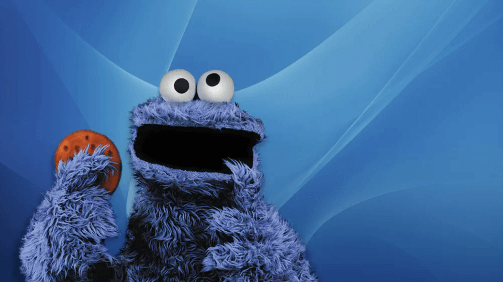clipart:1pdrqa6bce0= cookie monster

clipart:1pdrqa6bce0= cookie monster is a cherished character from Sesame Street, renowned for his enthusiastic love of cookies and endearing personality. With his iconic blue fur and famous catchphrase “Me want cookie!”, he has captured the hearts of audiences for decades. Cookie Monster combines fun with valuable lessons, making him a memorable and educational figure for children. This overview explores his history, distinctive traits, and cultural significance.
The Origins of Cookie Monster
Debuting in 1969 on Sesame Street, Cookie Monster was created by Jim Henson to both entertain and educate young viewers. Over the years, his character has evolved to reflect changing societal attitudes, including a focus on healthy eating habits. Despite these changes, Cookie Monster has remained a beloved character, symbolizing the blend of fun and learning that Sesame Street is known for.
Distinctive Characteristics
Cookie Monster is easily recognizable with his large googly eyes and deep, gravelly voice. His comical obsession with cookies often leads to humorous scenarios, endearing him to viewers of all ages. While his primary focus is on cookies, he also imparts lessons on self-discipline and sharing, making him a relatable and educational character.
Cookie Monster’s Role on Sesame Street
In Sesame Street, Cookie Monster plays a crucial role in imparting essential life skills to children. His segments often address themes like patience, sharing, and self-control, all delivered with his trademark humor. His interactions with other characters help convey these messages in an engaging way, contributing to the educational goals of the show.

Voice Actors and Puppeteers
Cookie Monster’s distinctive voice, originally performed by Frank Oz and now voiced by David Rudman, is a key element of his charm. The puppeteers bring Cookie Monster to life, adding warmth and humor to his character. The synergy between the voice actors and puppeteers is integral to Cookie Monster’s enduring appeal and comedic success.
Friends and Interactions
Cookie Monster shares his world with other beloved Sesame Street characters such as Elmo, Big Bird, and Oscar the Grouch. These friendships enrich his character and provide opportunities for diverse educational content. Through these interactions, Cookie Monster helps teach children about cooperation and the value of friendships.
Read Also clipart:-0o7f5vtmmc= track and field
Memorable Moments
Cookie Monster’s iconic moments include his famous song “C is for Cookie” and various comedic skits. These memorable scenes blend entertainment with important lessons, cementing his status as a cultural icon. His humorous antics, centered around his cookie obsession, have created some of the most memorable moments in children’s television.
Merchandising and Cultural Impact
Cookie Monster’s popularity extends beyond television into a wide array of merchandise, including toys and clothing. This extensive merchandising highlights his status as a beloved character across generations. His broad appeal, which spans both children and adults, reflects his significant cultural impact and enduring charm.
Promoting Healthy Habits
Although Cookie Monster is famous for his love of cookies, Sesame Street has evolved his character to advocate for balanced eating. He now includes fruits and vegetables in his diet, promoting a healthy lifestyle. This development underscores the show’s commitment to encouraging good eating habits while maintaining Cookie Monster’s fun personality.
Cultural References and Parodies
Cookie Monster has been featured in numerous parodies and cultural references, demonstrating his widespread influence. These parodies often play on his iconic traits and have helped keep him relevant in popular culture. His appearances in memes and viral content further illustrate his adaptability and lasting popularity.
Iconic Quotes
Cookie Monster is known for his memorable lines such as “Om nom nom nom,” which contribute to his lovable and humorous persona. These quotes not only entertain but also make him easily recognizable and relatable. His playful dialogue continues to be a defining feature of his character.
Impact on Popular Culture
Cookie Monster’s influence extends well beyond Sesame Street. He has appeared alongside celebrities and in various media, showcasing his role as a cultural icon. His ability to connect with diverse audiences and remain relevant in contemporary media highlights his significant impact on popular culture.
Educational Contributions
Beyond his entertainment value, Cookie Monster plays a vital role in teaching children important life skills. His segments often address topics like emotional regulation, problem-solving, and healthy habits, making learning engaging and fun. His contributions to education align with Sesame Street‘s mission to combine entertainment with essential life lessons.
FAQs About Cookie Monster
What is Cookie Monster’s real name?
Cookie Monster’s real name is Sid, revealed in a 2004 episode of Sesame Street.
Does Cookie Monster eat anything besides cookies?
Yes, he now promotes healthy eating by including fruits and vegetables in his diet.
Who are Cookie Monster’s friends on Sesame Street?
Cookie Monster’s friends include Elmo, Big Bird, and Oscar the Grouch, among others.
How has Cookie Monster’s character evolved over time?
His character has evolved to focus more on nutrition and self-regulation while maintaining his love for cookies.
What life lessons does Cookie Monster teach?
He teaches lessons on self-control, healthy eating, and sharing through humorous and relatable scenarios.
Why is Cookie Monster so beloved?
His playful nature, humor, and memorable quotes make him a favorite among audiences of all ages.
Conclusion
clipart:1pdrqa6bce0= cookie monster remains a cherished figure in children’s television, celebrated for his humor, educational value, and lasting cultural impact. His ability to entertain while imparting valuable lessons ensures his continued relevance and popularity among audiences worldwide.





